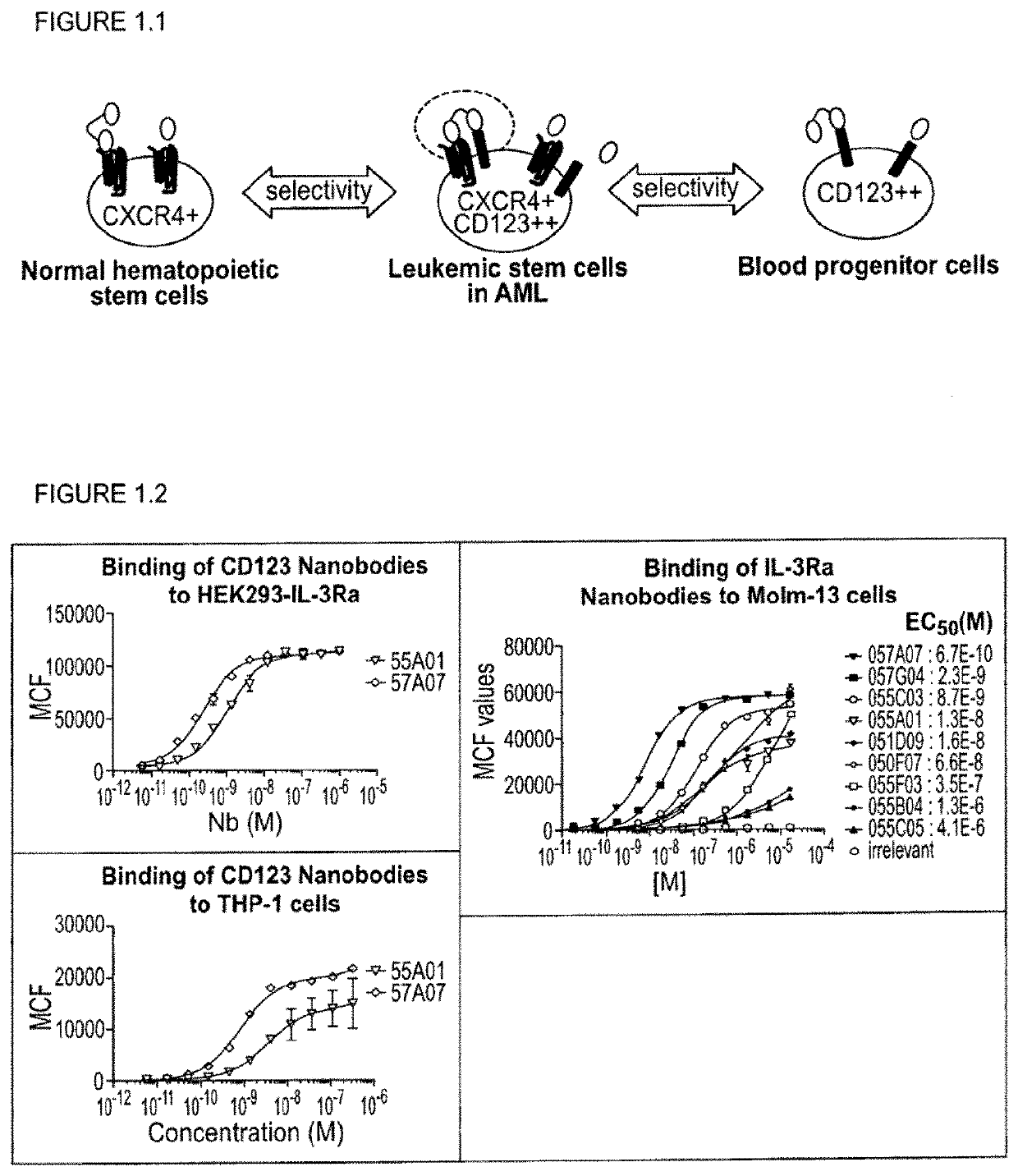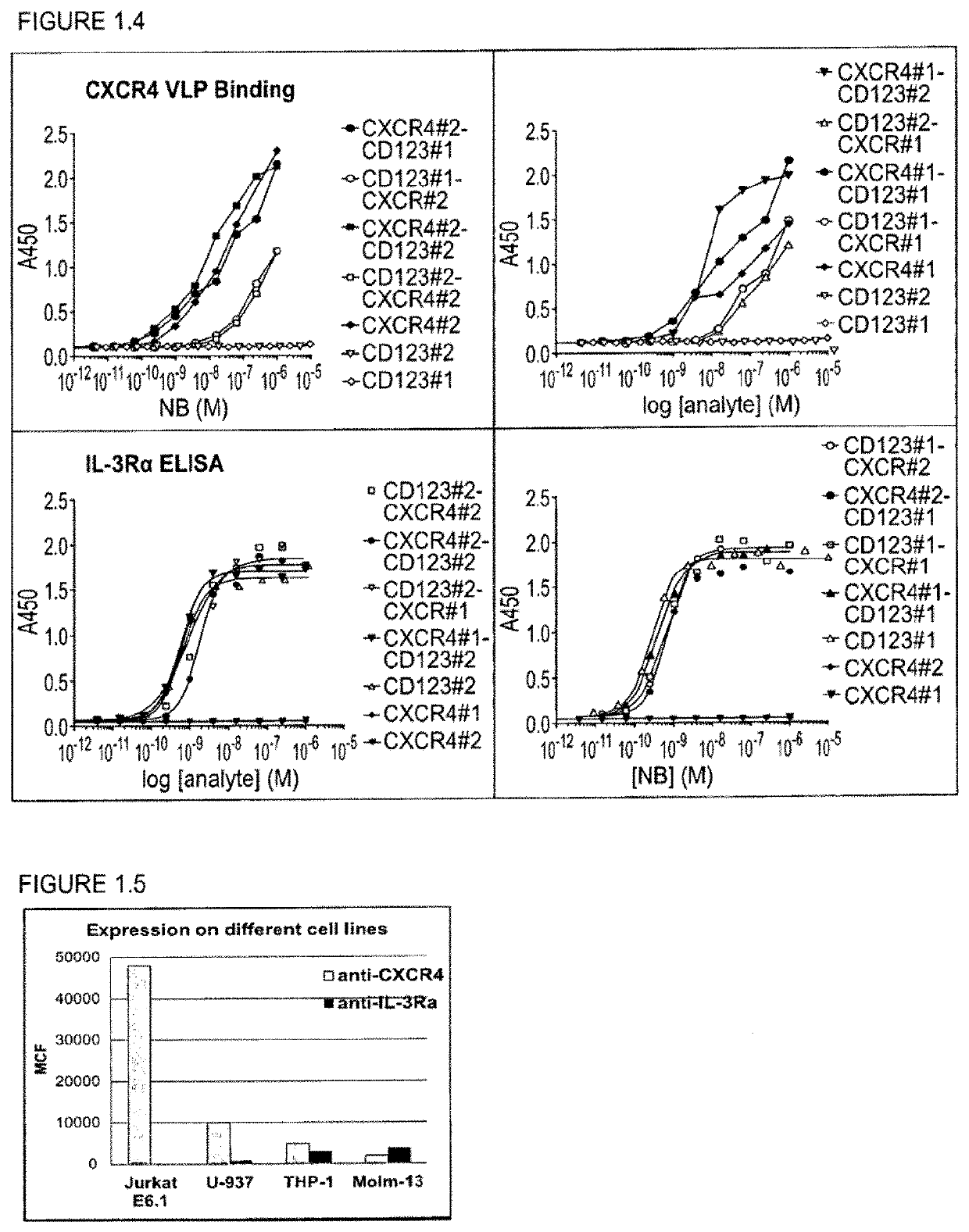Bispecific nanobodies
a technology of bispecific polypeptides and nanobodies, which is applied in the field of bispecific polypeptides, can solve the problems of toxicity and unwanted side effects, severe hampered medical use of many of these antibodies, and testing its function
- Summary
- Abstract
- Description
- Claims
- Application Information
AI Technical Summary
Benefits of technology
Problems solved by technology
Method used
Image
Examples
example 1
Preferential Targeting of Leukemic Cells with CXCR4-CD123 Bispecific Polypeptides
example 1.1
Experimental Set Up for Designing Bispecific CXCR4 and CD123 Polypeptides
[0311]With the generation of bispecific anti-CXCR4-CD123 Nanobodies we aimed to generate a high affinity and high potency antagonist for CXCR4 on cells that express both the CXCR4 and CD123 receptors, as a model system for cancer cells, but not on cells that express primarily CXCR4, which represent normal cells, all in order to minimize side-effects or toxicity.
[0312]To reach this selectivity, it was hypothesized that the anti-CXCR4 Nanobody on one arm (the functional ISV) needs to be a full antagonist, but with only a low to moderate affinity. The anti-CD123 Nanobody on the other arm serves (the anchoring ISV) to increase the affinity and potency of the anti-CXCR4 Nanobody on cells which co-express both receptors by avidity. Simultaneous binding to 2 membrane receptors will increase the affinity of the bispecific over monovalent Nanobodies. For the CD123 arm, the Nanobody is preferentially a binder, but which ...
example 1.2
Production of Monovalent Nanobodies
[0314]Monovalent CXCR4 and CD123-specific Nanobodies were produced in E. coli and expressed as C-terminal linked FLAG3, His6-tagged proteins in expression vector pAX129. The amino acid sequences are depicted in Tables 1 and 2 for monovalent CXCR4-building blocks and monovalent CD123-building blocks, respectively. Expression was induced by IPTG and allowed to continue for 4 h at 37° C. After spinning the cell cultures, periplasmic extracts were prepared by freeze-thawing the pellets. Nanobodies were purified from these extracts using immobilized metal affinity chromatography (IMAC) and a buffer exchange to D-PBS. Purity and integrity was confirmed by SDS-PAGE.
PUM
| Property | Measurement | Unit |
|---|---|---|
| average dissociation constant | aaaaa | aaaaa |
| average dissociation constant | aaaaa | aaaaa |
| KA | aaaaa | aaaaa |
Abstract
Description
Claims
Application Information
 Login to View More
Login to View More - R&D
- Intellectual Property
- Life Sciences
- Materials
- Tech Scout
- Unparalleled Data Quality
- Higher Quality Content
- 60% Fewer Hallucinations
Browse by: Latest US Patents, China's latest patents, Technical Efficacy Thesaurus, Application Domain, Technology Topic, Popular Technical Reports.
© 2025 PatSnap. All rights reserved.Legal|Privacy policy|Modern Slavery Act Transparency Statement|Sitemap|About US| Contact US: help@patsnap.com



